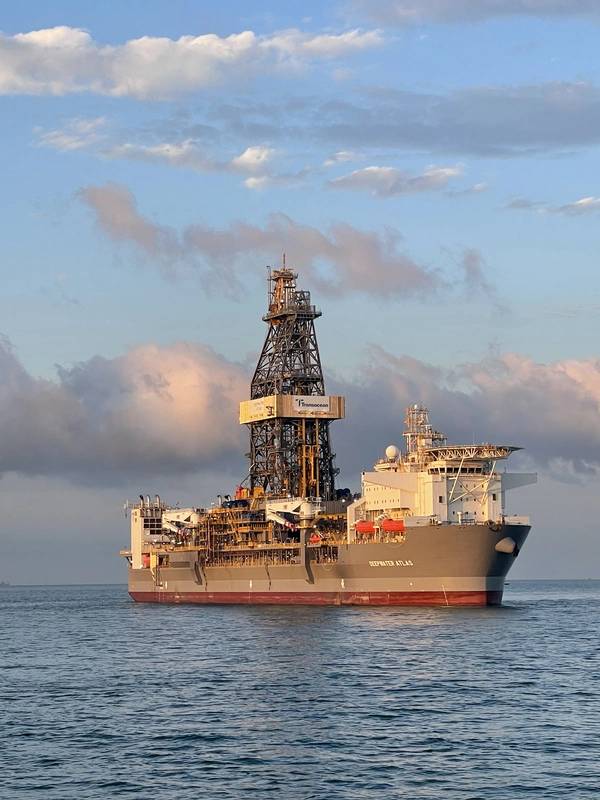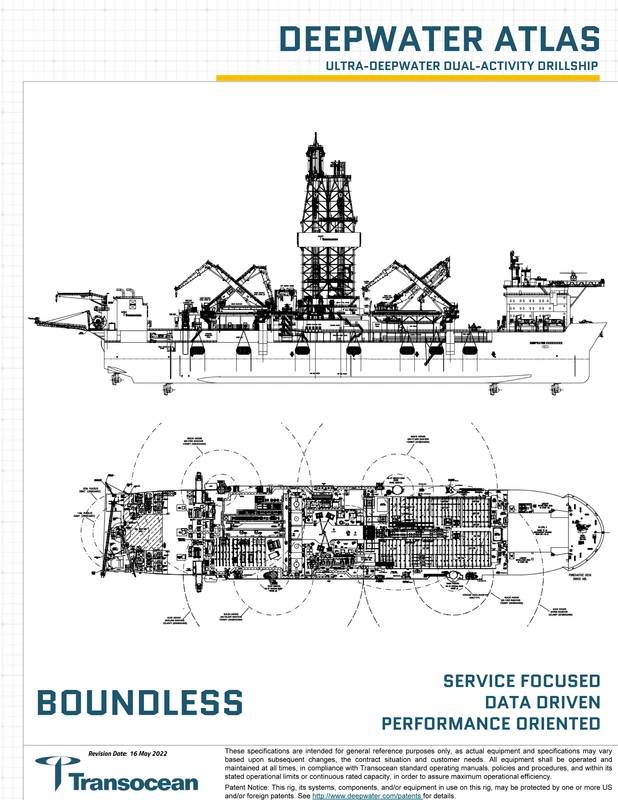
Marijana Sosic, Manager, Technical Marketing at Transocean, discusses some of the outstanding features of the Deepwater Atlas – Built in Singapore at Sembcorp Marine's Jurong Shipyard and flying the Marshall Islands flag – and sister-ship Deepwater Titan , which together represent an investment of more than $2 billion.
The Deepwater Atlas was launched this year in Singapore. What, specifically, is so special about it?
The Deepwater Atlas is the first of its kind eighth-generation drillship that will offer 20,000 psi well control capabilities and a 3.4 million pound hoisting capacity. The Deepwater Atlas and the Deepwater Titan, the Atlas’ sister-rig that will follow her to the Gulf of Mexico next year, offer the highest rated equipment in the industry. These eighth-generation, ultra-deepwater drillships will allow Transocean, and its customers, to access high pressure and high temperature reservoirs that previously were not accessible. The equipment on our newest drillships can reduce the time it takes to drill a deepwater well, bringing total costs down.
Among the special aspects of the Deepwater Atlas is the story she tells about resilience. Despite an industry downturn and global pandemic challenges, she has now made her way to the Gulf of Mexico, where she commenced drilling operations. Transocean owns the only two assets in the world specifically designed to maximize efficiencies for 20,000 psi well completions.
It has been said that this is the first 8th generation drillship in the world. What does this mean, exactly?
Transocean’s eighth-generation drillships are designed to be outfitted with well control systems rated for 20,000 psi and possess a 3.4 million pound hoisting capacity. To provide this capability, upgrades were made to the derrick and a new, higher-rated drawworks, top drive and rotary table were added. This new equipment was designed and delivered specifically for these projects – marking new firsts, not only for Transocean, but for the entire industry.
For context, seventh-generation rigs offer 2.5 to 2.8 million pound hoisting capacity, and 15,000 psi well control systems. Sixth-generation rigs offer a hoisting capacity of up to 2.0 million pounds and are rated for water depths up to 10,000 feet. Seventh- and eighth-generation rigs are designed for water depths of up to 12,000 feet.
How, specifically, will these ships create an opportunity to drive the total well cost down?
The upgraded hoisting capacity will provide our customers with numerous cost and time-saving opportunities, especially when drilling programs and well configurations require the handling of heavy, large diameter casing strings. With a higher hook load, more work can be accomplished in a shorter period. Additionally, the 20,000 psi blowout preventer (BOP) stacks have been designed with extra attention to features that result in reduced maintenance times. The well test and completion deck is the biggest in the offshore drilling industry. The aft hull was designed for improved efficiency, which was accomplished by reducing double-handling of equipment and materials.
 Transocean’s eighth-generation drillships are designed to be outfitted with well control systems rated for 20,000 psi and possess a 3.4 million pound hoisting capacity. Seventh-generation rigs offer 2.5 to 2.8 million pound hoisting capacity, and 15,000 psi well control systems. Sixth-generation rigs offer a hoisting capacity of up to 2.0 million pounds and are rated for water depths up to 10,000 feet.
Transocean’s eighth-generation drillships are designed to be outfitted with well control systems rated for 20,000 psi and possess a 3.4 million pound hoisting capacity. Seventh-generation rigs offer 2.5 to 2.8 million pound hoisting capacity, and 15,000 psi well control systems. Sixth-generation rigs offer a hoisting capacity of up to 2.0 million pounds and are rated for water depths up to 10,000 feet.
Marijana Sosic, Manager, Technical Marketing, Transocean
The completed drillship features three-million pound hook-load hoisting capacity. Why is this important?
The hoisting capacity of the drawworks is 3.4 million pounds with a net hook load of 3.0 million pounds. The weight of the traveling equipment, including the motion compensator that maintains the drill string position, the traveling block and hook, are all included in the hoisting capacity. This allows us to pick up a full 3.0 million pounds at the elevator. This is important to Transocean, and our customers, because it is more cost effective. The maximum capacity is higher than on any other rig, allowing us to run longer casing strings, reducing handling, running and cementing times.
Deepwater Atlas and its sister ship Titan were ordered back in 2014, and they're only being delivered now. Can you provide some color on the challenges faced since the original order? The rigs reportedly cost $2.25B in total, versus $1.08B when originally ordered.
While the rigs were originally ordered in 2014 just before the industry downturn, these two projects shifted in 2018 when one of our customers approached us with an opportunity to design and construct a rig capable of drilling in 20,000 psi environments – the new frontier of ultra-deepwater drilling. As a result of the new rig design and construction management contract, and a five-year drilling contract, we shifted gears and got to work to accomplish the design, construction and delivery requirements set forth in the construction contract. The initial contract for the Deepwater Titan adds $830 million in backlog and the initial contract for the Deepwater Atlas adds $252 million in backlog to Transocean’s industry-leading $7.3 billion backlog as of October 13.
How much do these high psi BOPs add to the cost? Can they be installed on rigs in the existing fleet?
The 20,000 psi BOP stacks are very complex, requiring certain modifications to the rig: the entire well control system would require modification and upgrading. The work would take existing rigs out of operation and include hull piping changes, among other things. Essentially, it would be similar to replacing an entire air conditioning and heating system and all of its associated duct work – when it is working efficiently in a new house – within a year or two of its installation.
Transocean has said that, apart from the two rigs being "the most capable and highest specification rigs in the world" they are also equipped to reduce fuel consumption and cut emissions. Can you share further info on how this is being done?
While we are always looking for ways to reduce our carbon footprint, we currently reduce emissions and fuel consumption through the use of fuel additives that optimize fuel consumption, hybrid power systems, LED lighting and a high-efficiency power plant configured to comply with Tier III International Maritime Organization emissions standards. Importantly, reducing well construction time using the design features of our newest rigs, such as their industry-leading hookload capacity, leads to less fuel consumption and emissions per well.
 Image courtesy Transocean
Image courtesy Transocean
Deepwater Atlas Main Particulars